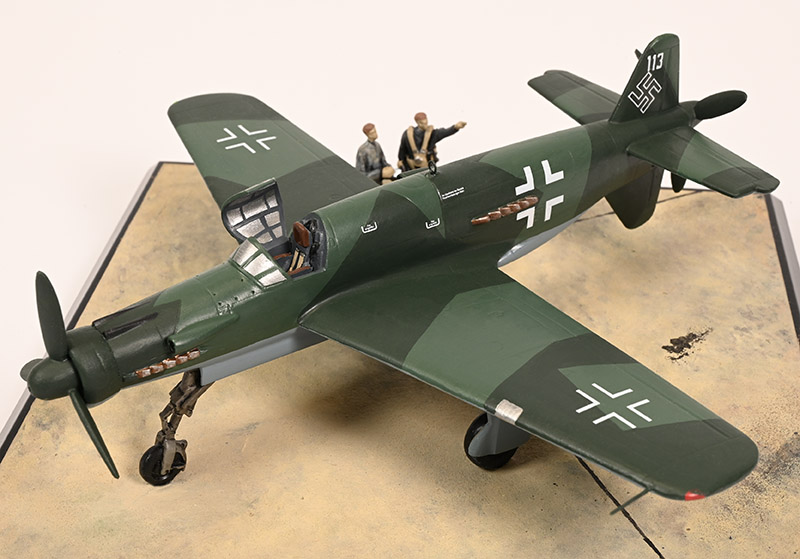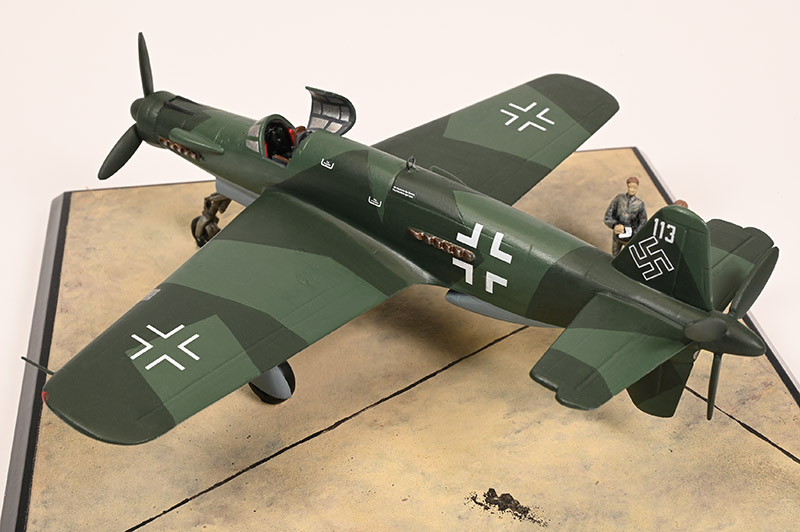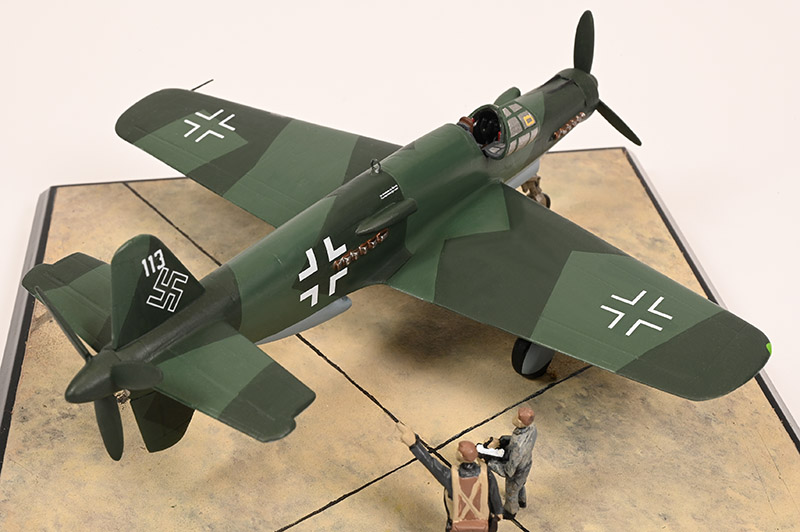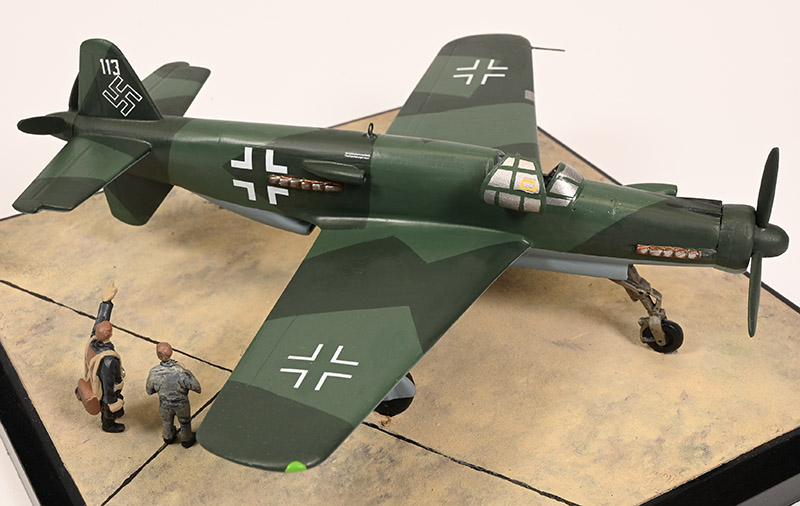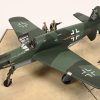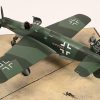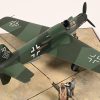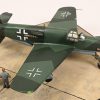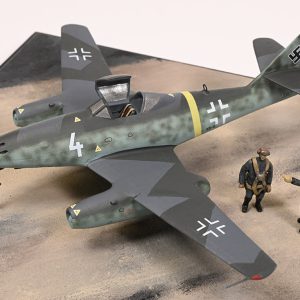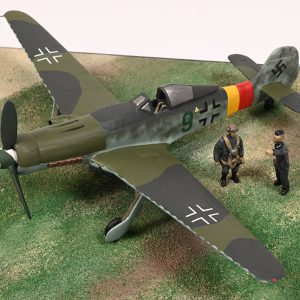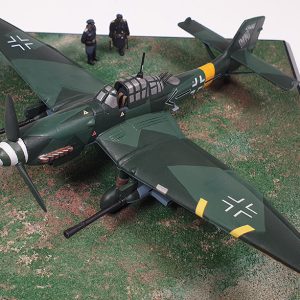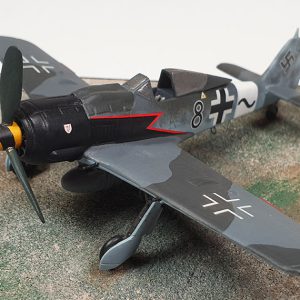Dornier Do 335A-0 Wk Nr 240113 RP+UC Spring 1945.
Whatever shortages the German aircraft industry experienced in the final year of World War 2, innovation cannot be included among them. Dornier-Werke GmbH’s Pfeil (Arrow), or Dornier Do 335 as it was officially designated, was a remarkable and unique creation due to its tandem engine arrangement which digressed widely from the orthodox designs of the day.
The tandem fore-and-aft engine layout, or centre-line thrust concept, can be traced back to World War I. As early as 1916, Professor Claus Dornier and his team had experimented with tandemly arranged engines which were subsequently exploited in a number of the company’s flying boat designs during the 1920’s and 1930s. In 1937 Dornier patented his inventive step of combining a tractor engine installation with a pusher airscrew positioned aft of the tail unit. This power plant configuration offered a number of advantages over a single piston-engine configuration, namely, superior speed, unimpaired flight on one engine, and increased internal load carrying capacity without a substantial penalty in drag due to its centre-line engine deployment.
To prove the feasibility of a centre-line mounted rear engine, Dornier commissioned a flying test-bed designated the Göppingen Gö 9. This small single seat machine was propelled by a pusher airscrew mounted aft of a cruciform tail unit. Starting in early 1940, the Gö 9 was evaluated and the results justified the further development of this unique power plant arrangement.
On October 26th 1943, the Dornier Do 335V1 prototype made its maiden flight. It was piloted by Flugkapitän Hans Dieterle who incidentally achieved fame in 1939 for capturing the world air speed record. Following initial flights, a number of single-seat and tandem-seat variants of the Dornier Do 335A-0 were built and tested prior to the end of hostilities in Europe. However, due to lags in production, the type failed to enter operational service with the Luftwaffe.
About 70 Do 335’s were completed at the time of the end of hostilities. These machines were driven by two of the most powerful 12-cylinder engines then available, namely Daimler-Benz DB 603 inverted-Vee liquid cooled engines. The rear motor was fuselage mounted directly aft of the trailing edge of the wings and required a shaft extending backwards beyond the tail assembly to drive the pusher airscrew. The Do 335 was one of the fastest piston-engine fighters in the world ever to have attained production status, indeed the Germans’ claimed a top speed in excess of 470mph (756 km/h). In addition to its unique power plant arrangement, the Do 335 sported other innovative features including an assisted escape capability involving an ejector seat and jettisonable upper tail fin and rear airscrew. It is unknown if any Do 335 pilot used the ejector seat in an emergency. This tends to discount gruesome tales concerning crashes of two of the prototypes. It was rumoured that corpses of the unfortunate test pilots were retrieved from the wrecks devoid of their upper limbs apparently due to a design fault in the operation of the hood jettison system.
The Dornier Do 335A-0 was a massive fighter which stood tall on its tricycle undercarriage. It was lively to fly, amply powered by virtue of its two DB 603 engines, and afforded the pilot an excellent view in the air. That said, this was not an aircraft for dog fighting. It was better suited to the bomber interceptor role due to its good overtaking speed, potent weaponry, and endurance which would have allowed the Dornier Do 335A-0 to fly standing patrols whilst awaiting its prey. In spite of its promise, there is no known record of any Do 335 firing its guns in combat. The combination of features embodied by the Do 335 were unique at the time of its conception and had the Dornier creation not appeared at the end of the era of piston-engined fighters it is reasonable to assume that the tandem engine layout would have been adopted by other aircraft designers.
Dornier Do 335 RP+UC was an A-0 variant single-seat day fighter powered by two Daimler-Benz DB 603E-1/QE-1 inverted-Vee liquid cooled engines. Approximately ten aircraft were completed in this series. In the last days of the war, this particular machine was found by American forces at Bindlach near Bayreuth in Germany. To this day, a debate continues as to whether the famous night fighter ace Wolfgang Schnaufer piloted this machine on its last flight. In any event RP+UC suffered a buckled rear fuselage and loss of its ventral rudder and fin probably due to a misjudged landing run.


